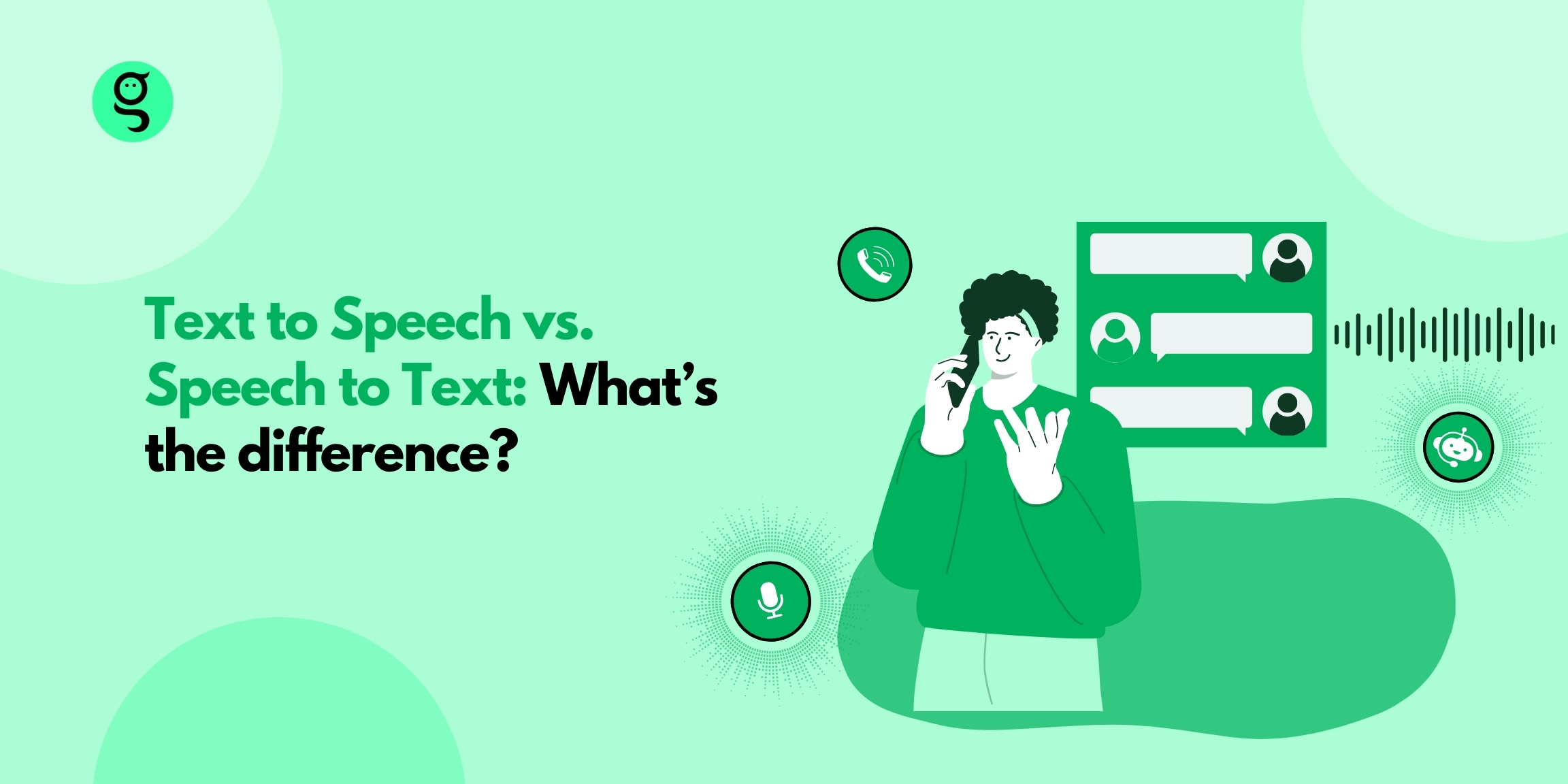Have you ever wondered how voice assistants like Siri and Alexa understand your requests? Or how automated IVRs can speak responses back to you with lifelike voices?
The secret lies in two key technologies: text-to-speech (TTS) and speech-to-text (STT). While related, there are some important differences between the two that businesses should understand when building voice AI solutions. And in this blog, we’re going to discuss the same.
What is text-to-speech (TTS)?
Text-to-speech, or TTS, is exactly what it sounds like - technology that converts written text into natural-sounding human speech. It has been received quite well by people worldwide and is set to reach a market capital value of $6.52 Billion by 2027. TTS systems use advanced machine learning algorithms to analyze language and mimic human voices. Although earlier TTS sounded quite robotic, the quality has improved tremendously over the years.
Today’s TTS applications include voice assistants like Alexa and Siri, navigation systems, audiobook narration, talking interfaces for vision-impaired users, and more. Essentially any application that needs to communicate through spoken words relies on TTS to translate text into voice output.
What is speech-to-text (STT)?
Speech-to-text (STT) works in the opposite direction of TTS - converting spoken words into machine-readable text. STT technology uses speech recognition algorithms to detect speech signals, interpret vocabulary and grammar, and transcribe speech into text in real time.
STT powers AI-powered voice assistants, dictation software, closed captioning, IoT, and voice-controlled devices. It even enables real-time translation of spoken languages. Much like its counterpart TTS, STT is essential technology for facilitating natural language conversations between humans and machines.
The Difference between TTS & STT Technology
While TTS and STT both leverage machine learning to bridge the human-computer divide, they have notable differences:
- Input/Output: TTS accepts text as input and outputs human-like voice audio, while STT accepts audio input of human speech and output text.
- Accuracy: TTS can usually achieve 95-99% accuracy relatively easily, as it's working with well-formed textual input. STT struggles more to reach over 90% accuracy in recognizing diverse voices and accents.
- Use Cases: TTS serves well for voice user interfaces, while STT excels at transcription and interpretation of natural speech.
Their capabilities also differ. For example, TTS struggles to mimic personal tone and emotion compared to a real human voice. On the other hand, many STT models have difficulty understanding sarcasm, witty banter, and culturally specific references during speech. However, advances in deep learning technology are continually improving these technologies.
How Do TTS & STT Work in AI Voicebots?

When combined, TTS and STT enable seamless, voice-first interactions between humans and AI systems. TTS allows bots like VoiceGenie to respond to customer questions or orders with remarkably human-sounding voices. Meanwhile, STT lets the same voice bots interpret requests, feedback, and queries spoken aloud by users.
Together, these two technologies facilitate fluid conversations that feel natural and responsive. As machine learning improves, such voice bots become more accurate and conversational - understanding context, asking clarifying questions, and offering highly relevant suggestions or recommendations.
So no more frustrating “I didn’t understand that” responses. Voice bots leverage the innate power of speech, our most natural means of communication while remaining digital assistants at heart.
To Sum Up:
So to conclude, TTS and STT are essential technologies underpinning voice-based AI solutions. While technical at their core, they enable more intuitive and human-like interactions with virtual assistants, bots, and beyond.
And if you’re ready to leverage voice AI to better serve your customers, book a custom demo with our experts at VoiceGenie. Our voice bots speak like humans with any voice, language, or persona your business needs. Let your customers discover the next generation of conversational voice interfaces.

Comments